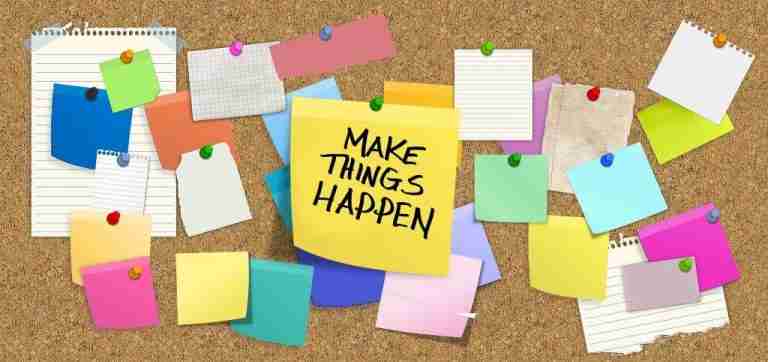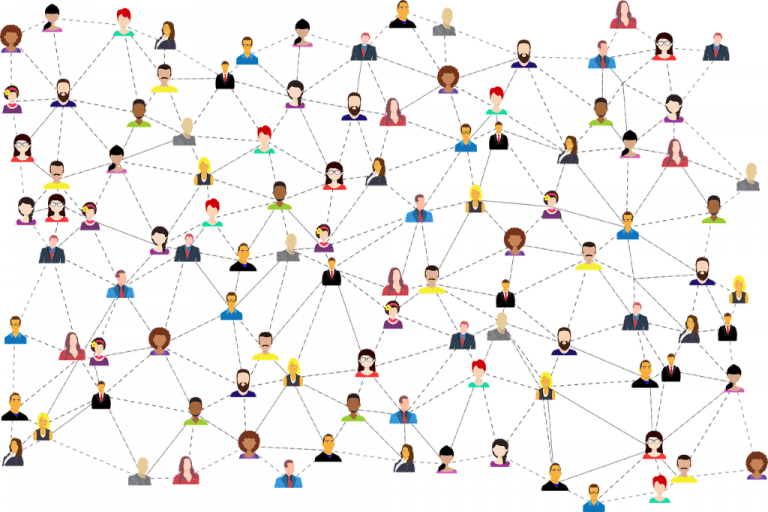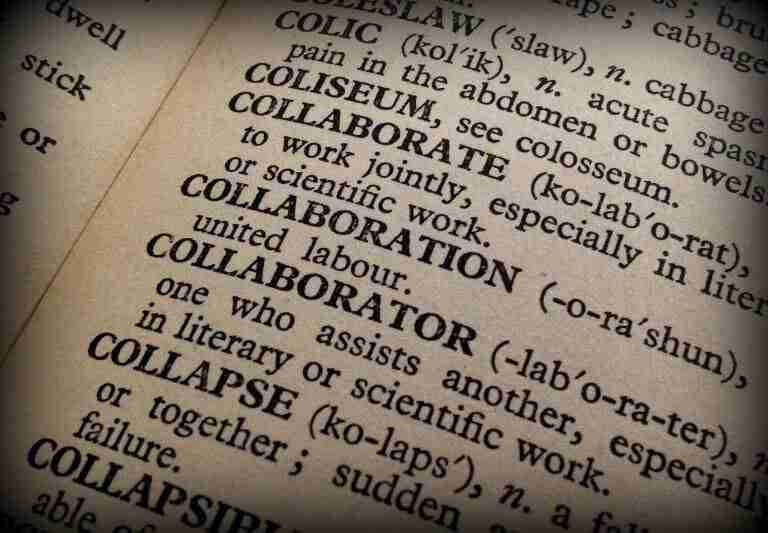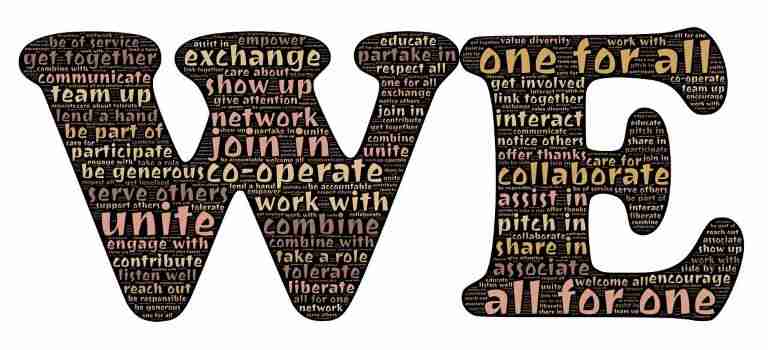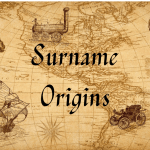Two simple genealogy strategies to make things happen are communication and collaboration.
You might be thinking ‘what does communication and collaboration have to do with My Genealogy Tree?’
Plenty, to make things happen!
Some of the simplest things can give you the biggest impact to your tree.
You will:
- Learn from each other
- Share documents, photos or websites
- Make new friends/family
- Add new Ancestors
Let’s first take a look at communication.
Simple Strategy 1 : Communication
I know that a lot of people are worried about their personal information being lost and shared over the internet.
Don’t worry, most genealogy companies have their own internal email communication system, where the genealogy company keeps your personal email address private. This allows you to send emails without having to worry that someone will get your personal email.
Even FamilySearch, a free website has an internal email communication system.
My personal strategy is to use the internal email to my advantage. Whenever I have a question about a person in a tree, I quickly send the owner of the tree an email. This is also true when looking at my DNA cousins.
Here are Some Simple Communication Tips:
- When setting up your initial genealogy account, make sure you use an email address that you check often. It is frustrating not to receive a response back. I recently had a response that took 9 years! By that time, I had already solved that mystery and have moved on.
- Try respond to all emails as you never know where your next hint or information will come from. They could know a great website for finding records.
- A good example of this is when my distant cousin emailed me, and I responded. We kept chatting to each other, then one day he gave me this outstanding website for my Austrian lines. I have now taken my Austrian lines back to my 8th great-grandparents. If I didn’t answer his email, this line would still be a brick wall where I would still be stuck at my 2nd great-grandparents. Also, by taking the line out to my 8th great-grandparents, I can now see how some of my DNA cousins are related to me. So, it is a trickle effect, which in this case is a good thing.
- Explain well and be respectful. Here is another good example, somebody contacts me saying we are cousins. I look at my tree and theirs and say to myself “No way”.
- I can see they did not do their due diligence. In this instance my 2nd-great-grandfather was from Austria and emigrated to the United States in the late 1800’s and lived the rest of his life in Chicago area and his profession was a brick masonry. The person that contacted me had added my 2nd great-grandfather to their tree. This person’s family in the census records lived near St. Louis, Missouri, which is about 297 miles from Chicago and they were farmers to boot. I had to be respectful/tactful with explaining this in an email.
- Be helpful. I will use the same example about my 2nd-great grandfather. I helped them with finding the correct ancestors for their tree, thereby fixing a wrong tree so it wouldn’t replicate like a virus. As I discussed in a previous post titled: ” Focus On Details, You Won’t Regret It!“
- If you are a non-member, meaning you do not have a paid subscription, then you are limited with the internal email system. The only way you will receive any emails is from a member that initiates an email directly to you. Then, you are allowed to respond to their email.
- Frequency: The internal email system is not like your regular email. You do not get junk email or other outside emails. This is strictly internal emails from other members. To give you an idea I typically receive one or two emails per week based on my main tree of over 25,000 people plus all the other trees that I have created for others.
- In spite of all this, if you do not want to receive internal emails, for example, Ancestry members, then all you need to do is go to the tab in the drop-down menu under your name, click “Site preferences”, scroll to the bottom until you see “Community Connection Preferences” and then check the box: “Do not allow other members to contact me.” Be warned though, this will make it impossible to communicate or collaborate with others through the website as long as you have it set this way!
So based on this it is to your advantage, at least with Ancestry, to use an email that you check often as it will alert you to an email that you need to look at on your account.
Now let’s take a look at why collaboration is so important.
Simple Strategy 2: Collaboration
When I think of the word collaboration, many words come to mind: teamwork, joint effort, assist another, partnership, cooperation,
To start being a collaborator, you have to send or respond to emails. This is how all my collaborations have started.
When I started my tree in 2009, I happened to be emailing an Ancestry member about a person in my tree to see if they had further information.
The tree owner responded to me that I might want to contact so and so as they have the same people that is in your tree.
So, I did, and as it turned out we were 2nd cousins. As we got to chatting by email, I told “Carol” I have some unidentified photos of some little girls that are from our line we are working on.
Carol looked at the photos I posted, and it turned out to be her and her sister!
Carol told me that my grandma was the best, and she was so grateful for my grandma. It turns out my grandma babysat her and her sister and that she gave Carol her only birthday party as a little girl with a homemade cake,
Carol’s tree was so detailed and large over 60,000, that she didn’t mind helping me get started with my tree.
After a few internal emails we mutually decided to exchange personal emails as the internal email system at least on Ancestry is really slow and basic, and we were needing to send a lot of emails with attachments back and forth.
There were times while I was working on a part in the tree that Carol didn’t have that information on her tree so we would both see who could find the information the fastest and of course we shared whatever we found. I have learned a lot from my time working with my cousin.
I think of this beginning phase like Star Wars, I was learning from the master. She was my Yoda.
We haven’t worked together much lately as I am on a different line in my family, and I am now able to fly solo, but if I do have a problem, I know my cousin will be right there to help.
Another collaboration has to do with a language barrier:
According to my DNA, I am 43% Germanic that means a lot of records will be in a language I can’t speak or read.
Remember my example above about the cousin and the Austrian website, this same cousin is from Germany and can read the old German script.
Even though I am 43% Germanic and my grandfather came from Berlin, that language was lost when my mother was born as he did not want her to learn German as he was now a United States citizen. You need to understand my mom was born in 1934 so this was in between the two World Wars when German wasn’t a good ethnicity to be.
Getting back to my story, my cousin has assisted me with transcribing documents, whereby I have learned enough German to read the documents and when I can’t, I shoot off an email to him for help.
With any collaboration you do not want the relationship to be one sided. At the end of every email I wrote, I would always let him know if there was anything I could help him with, I would.
With this collaboration relationship, you always want to make sure you are helping them with their puzzles.
The Slackers:
I am happy to help others, but there are some who will keep coming back for help without really doing any help in return.
I call this type Slackers, as you will come across them at some point. Slackers want you to do all their work for them and not help or be a team player. They never offer to help you with anything in your tree and act as if your purpose is to be there for them.
When I get a slacker what I usually do is assess to see if their request for help is still in my best interest and if not, I would tell them in a nice way that is a great idea for them to follow-up on and please update me on what they find.
This is another reason it’s important to help those who help you, and it is also a good Idea to set up in advance in your mind what your limitations are for helping another tree when you get a slacker.
Make Things Happen:
You are probably wondering why I have this photo of “WE.” By using these two simple strategies of communication and collaboration you go from one person working on a tree or “I” and become two or more people working on your tree, which is “we.”
By communicating and developing a collaborative relationship, we help each other, we further each of our trees and we make things happen!
If you would like to read more articles about genealogy, please visit my homepage: https://www.nancydrugenealogy.com/.
